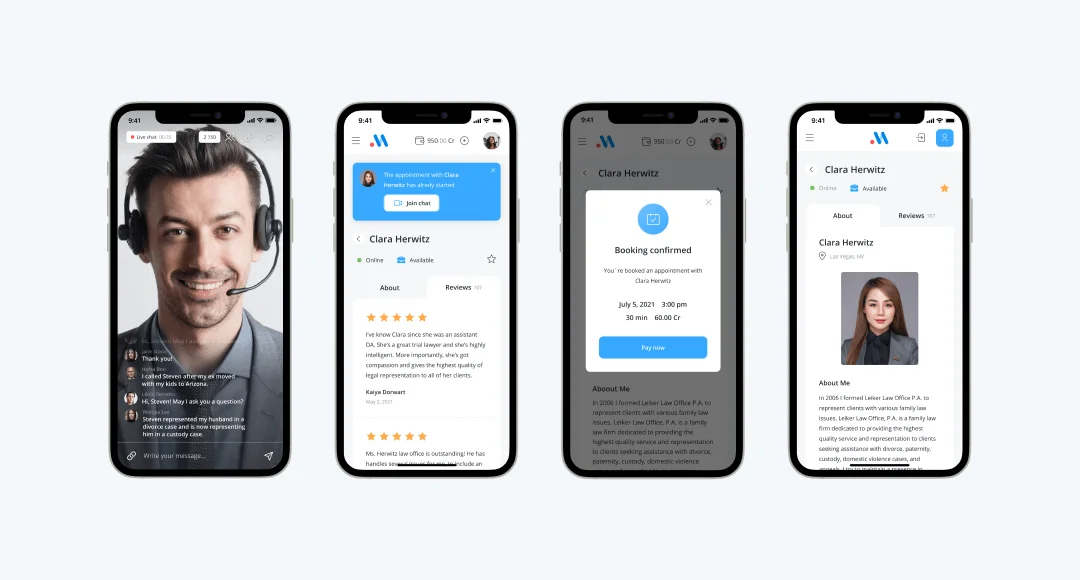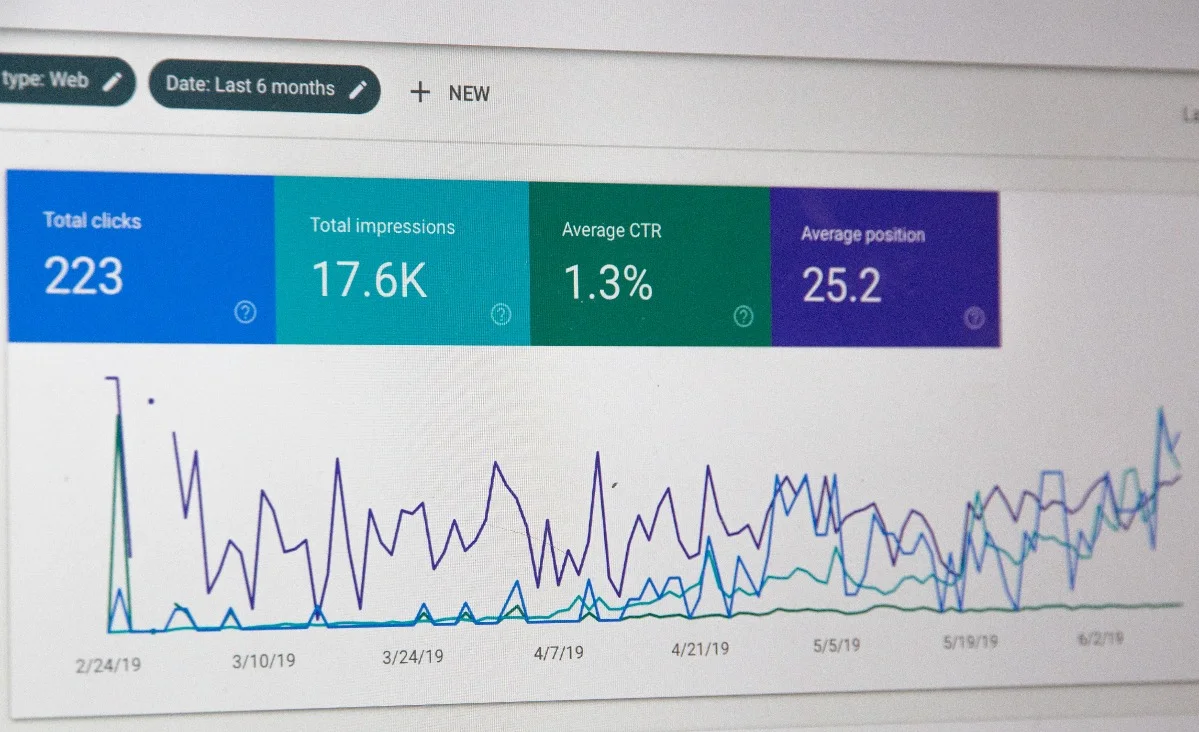How to Build Your Own Online Training Website
In this comprehensive guide, we delve into the essentials of creating and managing a successful online training website. From identifying your niche and audience to choosing the right technical setup, we cover key steps like selecting a domain, hosting, and integrating effective learning management systems. The article also explores the creation of engaging course content, effective monetization strategies, and the importance of marketing and scaling your online course platform for long-term success.

How to build your online training website
Introduction
The digital era has ushered in a significant shift in educational and professional development, with online training websites experiencing a meteoric rise. These platforms have revolutionized how we create, sell, and consume educational content, making learning more accessible and flexible than ever. The importance of online courses in today’s landscape cannot be overstated. They offer a dynamic way to acquire new skills, share knowledge, and even monetize expertise. As a result, understanding how to build an effective training website has become crucial for educators and entrepreneurs alike.
This surge in eLearning platforms reflects a growing demand for diverse, high-quality course content, ranging from academic subjects to professional training. The ability to create and sell online courses has opened doors for many to establish their own online schools, fostering a vibrant online community dedicated to continuous learning and teaching.
Understanding the Basics

Defining Online Training Websites
At its core, an online training website is a specialized elearning platform that facilitates the creation, hosting, and selling of online courses. These digital arenas are designed to deliver course content, ranging from video lessons to interactive quizzes, to a global audience. They embody the concept of virtual learning, where anyone with internet access can engage in educational pursuits, whether for personal enrichment or professional advancement. The essence of an online course website lies in its ability to break geographical barriers, offering learners the flexibility to study at their own pace and convenience.
The Evolution and Impact of Online Training
The evolution of online courses has been monumental in shaping the educational landscape. These courses have transitioned from simple, text-based formats to rich, multimedia experiences, often including video content, live discussions, and hands-on projects. This transformation has been driven by the increasing demand for accessible and diverse learning opportunities. Online course platforms have become a nexus for individuals aiming to create their own online course, tapping into a market that values continuous learning and skill development.
Technology’s Role in Online Education
Technology is the backbone of online training websites, providing the tools and infrastructure necessary for course creation and delivery. Learning Management Systems (LMS) are at the forefront of this technological revolution. These systems offer a comprehensive suite of tools for managing online classes, tracking student progress, and facilitating communication within an online community. They enable course creators to build a structured and engaging learning environment, complete with course outlines, registration pages, and assessment tools.
Advanced features like front-end course builders, membership sites, and integrated payment methods have made it easier for educators to sell online courses and manage their online school. The best online course platforms offer a blend of flexibility, scalability, and user-friendliness, allowing educators to focus on course content and teaching, rather than the technical aspects of website management.
In conclusion, online training websites represent a significant shift in how knowledge is disseminated and acquired. They are not just platforms for learning but are dynamic ecosystems that cater to the diverse needs of the modern learner and educator. As technology continues to advance, these platforms are poised to offer even more innovative and personalized learning experiences.
Planning Your Online Training Website

Identifying Your Niche and Target Audience
When embarking on the journey to build an online training website, the first crucial step is identifying your niche and understanding your target audience. This involves:
Assessing Your Expertise: Reflect on your areas of knowledge and how they can be transformed into a compelling online course.
Understanding Learner Needs: Determine what your potential students are looking for in online courses. This could range from professional development to personal hobbies.
Defining Your Unique Selling Proposition (USP): What makes your online course different? Is it your teaching style, course content, or the unique interaction you offer?
Researching Demographics: Age, profession, educational background, and even geographical location can influence the design and marketing of your course.
Analyzing Market Demand and Competition
To ensure the success of your online course, a thorough analysis of market demand and competition is essential. This includes:
Market Research: Use tools and surveys to gauge interest in your course topic. Look for trends in online learning platforms and elearning websites.
Competitor Analysis: Study other course creators and online schools offering similar courses. Note their strengths and areas where your course can offer something more or different.
Identifying Gaps: Look for unmet needs or underserved topics within your chosen niche. This could be an opportunity to create an online course.
Setting Clear Objectives for Your Training Website
Clear objectives are the foundation of a successful online training website. Consider the following:
Educational Goals: What do you want your learners to achieve by the end of your course? This could range from acquiring a new skill to gaining certification.
Business Objectives: Are you looking to generate a steady income, build a professional network, or establish yourself as a thought leader?
Technical Requirements: Determine the technical needs of your website, such as a learning management system, course builder tools, and integration capabilities for things like email marketing and social media groups.
Marketing Strategy: Develop a plan for how you will promote your courses, whether through SEO, affiliate programs, or direct marketing to an existing audience.
By meticulously planning and understanding these aspects, you can create a robust foundation for your online training website, ensuring it not only meets the educational needs of your audience but also achieves your business objectives.
Technical Setup

Choosing and Registering a Domain Name
Creating an online training website begins with a crucial step: selecting a domain name. This is more than just an address for your site; it’s a reflection of your brand and the courses you offer. Here’s how to approach it:
Brainstorming: Think of names that are relevant to your online course, easy to remember, and resonate with your target audience.
Availability Check: Use domain registrars to see if your preferred name is available. If not, consider variations or different extensions.
Registration: Secure your domain name by registering it with a reliable service. This typically involves an annual fee.
Selecting a Hosting Plan
Your choice of hosting is pivotal in how your online course website operates. It affects everything from site speed to scalability. Key considerations include:
Hosting Type: Options range from shared hosting, suitable for new course creators, to more robust VPS or dedicated hosting for extensive course platforms.
Scalability: As your number of courses grows, your hosting should be able to keep up. Look for plans that allow easy scaling.
Reliability: Opt for a host known for excellent uptime and customer support. This ensures your site is always available to learners.
Importance of SSL Certificates for Security
SSL certificates are non-negotiable for any online course platform, especially when you’re handling sensitive information like student data and payment details. Here’s why they’re essential:
Trust and Credibility: SSL certificates encrypt data, making your site secure and building trust with your users.
SEO Advantage: Secure sites are favored in search engine rankings, which is vital for attracting more students.
Compliance: For selling online courses and accepting payments, SSL is often a requirement for legal and security standards.
In conclusion, the technical setup of your online training website is a foundational aspect of your journey in teaching online. A well-chosen domain, a reliable hosting plan, and securing your site with SSL are critical steps in building a successful online course platform.
Introduction to Scrile Meet

Pioneering the Future of Online Education with Scrile Meet
In an era where digital education is paramount, Scrile Meet emerges as a leading solution for those aspiring to build dynamic online training websites. With over 20 years of experience in software development, we at Scrile are dedicated to empowering educators and entrepreneurs in the online education sector. Our Scrile Meet platform is specifically designed to facilitate the creation and management of engaging online courses, making it an exemplary choice for modern educational needs.

Designing Intuitive Training Websites with Scrile Meet
User-Focused Interface Design: At Scrile Meet, we prioritize creating user-friendly experiences. Our platform is designed to ensure that both course creators and learners find it easy to navigate and use, enhancing user engagement and learning outcomes.
Technological Versatility: Our expertise spans across various technologies essential for a comprehensive online course platform. Scrile Meet integrates features like live streaming, mobile accessibility, and advanced course creation tools, catering to a wide range of educational requirements.
Customization and Growth: Understanding the uniqueness of each online course vision, Scrile Meet offers extensive customization options. From designing course landing pages to offering a variety of course formats, we ensure that your online school reflects your educational ethos and goals.
Continuous Support and Empowerment
Dedicated Post-Launch Support: Our commitment to our clients extends beyond the initial launch. Scrile Meet provides ongoing support and updates, ensuring that your online course platform remains at the cutting edge of digital education trends.
Full Ownership and Independence: For those seeking complete control over their online course, Scrile Meet offers the option to acquire the source code. This empowers you with the freedom to independently manage and evolve your platform, tailoring it to your specific educational needs.
The Scrile Meet Advantage in Online Course Creation
Rapid Market Entry: Leveraging Scrile Meet for your online course platform ensures a quick and efficient route to market, significantly reducing development time.
Cost-Effective and Scalable: Starting with our robust, ready-made solution, you can customize Scrile Meet to fit your specific needs, offering a budget-friendly approach to online course creation.
Reliability and Scalability: With advanced cloud solutions and Kubernetes deployment, Scrile Meet guarantees a platform that is not only reliable at launch but also capable of scaling alongside your growing educational venture.
In summary, Scrile Meet stands as a comprehensive, user-centric solution for creating and managing online training websites. Combining our technological prowess with a deep understanding of the educational landscape, we provide an ideal platform for educators and entrepreneurs to realize their vision of delivering quality online education. With Scrile Meet, you’re not just building a course platform; you’re shaping the future of digital learning.
Building the Training Website

Choosing the Right Platform for Your Online Course Website
When embarking on the journey of how to build an online training website, selecting the appropriate platform is a pivotal decision. The choice often boils down to popular Content Management Systems (CMS) like WordPress, or specialized Software as a Service (SaaS) platforms designed for eLearning.
WordPress: A versatile and widely-used CMS, WordPress is a strong contender for creating an online course website. It’s particularly appealing for those who already have a website and wish to add content or for those comfortable with a bit of DIY customization.
SaaS Platforms: These are tailor-made for eLearning and often include all the necessary tools for course creation, management, and sales. They are ideal for those who want to focus solely on creating and selling courses without worrying about the technicalities of website management.

Pros and Cons of Different Platforms
WordPress:
Pros:
Highly customizable with themes and plugins.
Great for SEO and integrating with other marketing tools like email marketing.
Offers a free version, with expenses mainly around hosting and premium plugins.
Cons:
Requires more technical know-how, especially for maintaining the site and handling updates.
Might need additional plugins for specific eLearning features, like course certificates or a front-end course builder.
SaaS Platforms:
Pros:
Designed specifically for online course creation and sales, offering features like course landing pages, video courses, and multiple payment methods.
Easier to use with less technical involvement.
Often includes built-in tools for course sales, marketing, and analytics.
Cons:
Less customizable than WordPress.
Can be more expensive in the long run due to subscription fees.
Customizing with Themes and Plugins
Themes: Choosing the right theme is crucial for your course website. It should align with your brand and be conducive to learning. Look for themes that offer a clean layout, easy navigation, and are responsive for all devices.
Plugins: Plugins extend the functionality of your website. For a course website, essential plugins might include:
LMS Plugins: To manage your courses, track progress, and handle enrollments.
eCommerce Plugins: If you’re selling courses, you’ll need a way to manage sales and payments.
Email Marketing Plugins: To keep in touch with your students and promote your courses.
SEO Plugins: To ensure your online course site ranks well in search engines.
Customization: Remember, the goal is to create an engaging and user-friendly experience. Customization should enhance the learning experience, not complicate it. Keep your course outline clear, make navigation intuitive, and ensure that the content is the star of the show.
In conclusion, building an online training website involves careful consideration of the platform, understanding the pros and cons of each option, and customizing the site to meet your specific needs as a course creator. Whether you choose WordPress for its flexibility and control or a SaaS platform for its ease of use and specialized features, the key is to create a platform that effectively delivers your courses and resonates with your target audience.
Integrating Learning Management Systems (LMS)

Overview of LMS and Its Importance
A Learning Management System (LMS) is a critical component when you create an online course or build an online training website. It’s the backbone that supports the entire educational framework, enabling the creation, management, and delivery of online courses. An effective LMS not only simplifies course creation but also enhances the learning experience for students.
Selecting the Right LMS
Choosing the right LMS is pivotal for the success of your online school. Factors to consider include:
User-Friendliness: The LMS should be intuitive for both instructors and learners.
Customization: Look for an LMS that allows customization to align with your course outline and branding.
Scalability: Ensure the LMS can handle an increasing number of courses and users.
Support for Multiple Course Formats: The LMS should support various formats like video courses, text, and interactive content.
Assessment and Tracking: Features for tracking progress and assessing learners are essential.
Integration Capabilities: The LMS should integrate seamlessly with other tools and platforms.
One popular choice is LearnDash, known for its flexibility and comprehensive features, making it a top contender for the best online course platform.
Integrating Scrile Meet for Live Sessions and Consultations

Integrating live session capabilities into your LMS can significantly enhance the teaching online experience. Scrile Meet is an ideal solution for this. It allows for real-time interaction between instructors and students, making the learning process more engaging and interactive. Here’s how Scrile Meet can be integrated:
Live Sessions: Conduct live classes or webinars directly through your course website.
One-on-One Consultations: Offer personalized coaching or tutoring sessions.
Interactive Features: Utilize tools like screen sharing, virtual whiteboards, and real-time Q&A.
Easy Integration: Scrile Meet can be seamlessly integrated into your LMS, ensuring a smooth user experience.
Recording and Replay: Sessions can be recorded for later review, adding value to your content.
In conclusion, integrating a robust LMS like LearnDash and a live session tool like Scrile Meet into your online course platform is crucial for creating a dynamic and effective online learning environment. This combination not only streamlines the course creation process but also elevates the learning experience, ultimately contributing to the success of your online course and training programs.
Creating Engaging Content

Designing a Course Curriculum
Creating an online course begins with a well-structured curriculum. This is the roadmap that guides learners through their educational journey. Here’s how to design an effective curriculum:
Identify Learning Objectives: Clearly define what you want your students to learn.
Segment into Modules: Break down the course into manageable modules or sections.
Progressive Difficulty: Start with basics and gradually increase complexity.
Include Diverse Learning Materials: Cater to different learning styles with a mix of text, videos, and interactive sessions.
Creating Multimedia Content
Multimedia content is key to keeping learners engaged. Here’s how to create compelling multimedia materials:
Video Lectures: Produce high-quality video content that is concise and informative.
Interactive Slides: Use slides with interactive elements to explain complex topics.
Animations and Graphics: Enhance understanding with visual aids.
Quizzes and Assessments: Include these to reinforce learning and track progress.
Utilizing Scrile Meet for Interactive Sessions

Interactive sessions are crucial in creating online courses that resonate with learners. Scrile Meet can be an invaluable tool in this regard:
Live Workshops: Host live workshops or webinars to discuss course topics in depth.
Q&A Sessions: Allow students to ask questions in real-time, fostering a collaborative learning environment.
Group Discussions: Use Scrile Meet to facilitate group discussions and peer learning.
Personalized Feedback: Offer one-on-one sessions for personalized guidance.
In conclusion, creating engaging content for your online training website involves a blend of well-planned curriculum, diverse multimedia materials, and interactive sessions. By leveraging tools like Scrile Meet, you can offer a dynamic and immersive learning experience. This approach not only enhances the value of your online courses but also boosts course sales and student satisfaction, setting your elearning website apart in the competitive online education market.
Monetizing Your Online Training Website

Setting Up Payment Gateways
To monetize your online courses effectively, integrating reliable payment gateways is crucial. Here’s how to set them up:
Choose Payment Gateways: Select gateways like PayPal, Stripe, or others that are widely used and trusted.
Integration: Integrate these gateways into your course website, ensuring a seamless payment process for users.
Multiple Payment Methods: Offer various payment methods to cater to a global audience, including credit cards, digital wallets, and bank transfers.
Pricing Strategies for Courses
Developing a pricing strategy is essential for your online course platform. Consider the following:
Competitive Analysis: Research pricing of similar courses to set competitive rates.
Tiered Pricing Models: Offer different pricing tiers for various course packages, from basic to premium.
Discounts and Offers: Use discounts and seasonal offers to attract more students.
Free Trials: Provide free trials or free courses to attract new users and upsell paid courses.
Utilizing Scrile Meet’s Integrated Payment System
Scrile Meet offers an integrated payment system, simplifying the monetization process:
Direct Payments: Enable direct payments for consultations and live sessions through Scrile Meet.
Custom Pricing: Set custom prices for different types of sessions, whether group or one-on-one.
Automated Billing: Benefit from automated billing and payment collection, reducing administrative workload.
Revenue Tracking: Easily track earnings and manage financials directly from the Scrile Meet platform.
To summarize, monetizing your online training website involves a combination of strategic pricing, diverse payment options, and leveraging integrated systems like Scrile Meet. By offering a variety of courses, from free versions to premium paid courses, and utilizing effective pricing strategies, you can maximize revenue. Additionally, Scrile Meet’s integrated payment system provides a streamlined solution for managing transactions, making it easier to sell online courses and consultations. This approach not only enhances user experience but also ensures a steady income stream for your elearning website.
Marketing and Promotion

Effective Marketing Strategies for Online Courses
To successfully market your online courses, consider these strategies:
Content Marketing: Create valuable content related to your course topics to attract and engage potential students.
Webinars and Workshops: Host free webinars or workshops to showcase your expertise and course offerings.
Partnerships and Collaborations: Collaborate with influencers or other course creators to reach a wider audience.
Referral Programs: Implement referral programs to encourage word-of-mouth promotion.
Leveraging Social Media and Email Marketing
Social media and email marketing are powerful tools for promoting online courses:
Social Media Campaigns: Use platforms like Facebook, Instagram, and LinkedIn to share course-related content and engage with your audience.
Targeted Ads: Run targeted ads on social media to reach potential students based on their interests and behaviors.
Email Campaigns: Build an email list and send regular newsletters with course updates, discounts, and valuable insights.
Engaging Content: Share engaging content such as success stories, testimonials, and course previews.
SEO Strategies for Better Visibility

SEO is crucial for increasing the visibility of your online course website:
Keyword Optimization: Research and use relevant keywords in your website content, course descriptions, and blog posts.
Quality Content: Regularly publish high-quality, relevant content to improve search engine rankings.
Backlink Building: Gain backlinks from reputable websites to enhance your site’s authority.
Technical SEO: Ensure your website is mobile-friendly, has fast loading times, and a user-friendly interface.
To sum up, effective marketing and promotion of your online courses involve a mix of content marketing, social media engagement, email marketing, and SEO strategies. By creating a strong online presence, engaging with your audience through various platforms, and optimizing your website for search engines, you can significantly increase the visibility and attractiveness of your online courses. This approach not only drives traffic to your course website but also helps in building a loyal community around your brand.
Managing and Scaling Your Website

Ensuring Smooth Operation and Maintenance
To maintain the smooth operation of your online training website, consider the following steps:
Regular Updates: Keep your website and its components up to date to ensure security and functionality.
Backup Strategies: Implement regular backups to protect your data against any unforeseen issues.
Monitoring Performance: Use tools to monitor your website’s performance and identify areas for improvement.
User Support: Provide efficient customer support to address the queries and issues of your users promptly.
Analyzing Performance and Gathering Feedback
Performance analysis and feedback are crucial for continuous improvement:
Analytics Tools: Utilize analytics tools to track user engagement, course completion rates, and other key metrics.
User Feedback: Regularly gather feedback from your users to understand their needs and experiences.
A/B Testing: Implement A/B testing for different features to determine what works best for your audience.
Adaptation: Be ready to adapt and make changes based on the insights gathered from analytics and user feedback.
Scaling and Adding New Features with Scrile Meet
As your online training website grows, scaling and adding new features become essential:
Integrating Advanced Features: Utilize Scrile Meet to integrate advanced features like live sessions and interactive consultations.
Adding New Courses: Continuously expand your course offerings to cater to a broader audience.
Scalability: Ensure that your website infrastructure can handle increased traffic and content as your user base grows.
Customization: Customize your website to keep it aligned with evolving market trends and user preferences.
In conclusion, managing and scaling your online training website involves a combination of regular maintenance, performance analysis, user feedback, and the integration of advanced features like those offered by Scrile Meet. By focusing on these areas, you can ensure the long-term success and growth of your online training platform, continuously meeting the needs of your learners and staying ahead in the competitive online education market.
Conclusion: Embracing the Future of Online Training

In summary, building a successful online training website involves several key steps. From identifying your niche, choosing the right technical setup, to creating engaging content and effective monetization strategies, each aspect plays a crucial role. We’ve explored how platforms like Scrile Meet can enhance the learning experience with interactive sessions and consultations, and the importance of a robust course landing page for attracting learners.
As a course creator, your journey involves continuous learning and adaptation. The future of online training is bright and ever-evolving. Embrace these changes by staying updated with the latest trends and technologies. Remember, the goal is not just to create courses but to foster an engaging and dynamic learning environment.
We encourage you to take these insights and apply them to your own website. Whether you’re offering unlimited courses, video courses, or specialized training courses, the potential for growth and impact in the online education sector is immense. Start building your online training website today and be a part of this exciting future.
FAQ
How do I create an online training website?
To build an online training website, start by identifying your niche and online course idea. Choose a platform that supports the creation of unlimited courses and allows for diverse course formats like video courses. Focus on creating courses that cater to your target audience. Ensure your website can host all your courses effectively, providing a seamless user experience.
How do I create an online teaching website?
Creating an online teaching website involves similar steps. Begin with a clear online course idea, then move on to create your own courses that are engaging and informative. Utilize tools and platforms that aid in creating courses, including interactive elements like video courses. Ensure your platform can support the diverse needs of your teaching objectives, whether it’s for a few courses or unlimited courses.
How do I host an e learning website?
Hosting an e-learning website requires selecting a reliable hosting service that can support the bandwidth and storage needs of your online courses. Consider scalability for hosting unlimited courses and ensure that the hosting service is compatible with the course platform you choose. It’s important to provide a stable and fast-loading environment for all your courses, especially if they include multimedia elements like video courses.
Read also
How Do Online Dating Sites Make Money?
Discover the various revenue models used by online dating sites, including subscription fees, advertising, and in-app purchases.
How to Start a Foot Fetish Webcam Site: Key Steps
Explore the key steps to starting a foot fetish webcam site, including platform setup, marketing strategies, and monetization techniques.
How to Start a Web Cam Business: A Step-by-Step Guide
Get a step-by-step guide on starting a webcam business, from initial setup and equipment to attracting viewers and generating revenue.
How to Start Your Webcam Business: Essential Tips
Learn essential tips for starting your webcam business, covering everything from business planning to content creation and audience engagement.
Webcam Business: Building and Growing Your Brand
Discover strategies for building and growing your webcam business, including branding, marketing, and optimizing your platform for success.